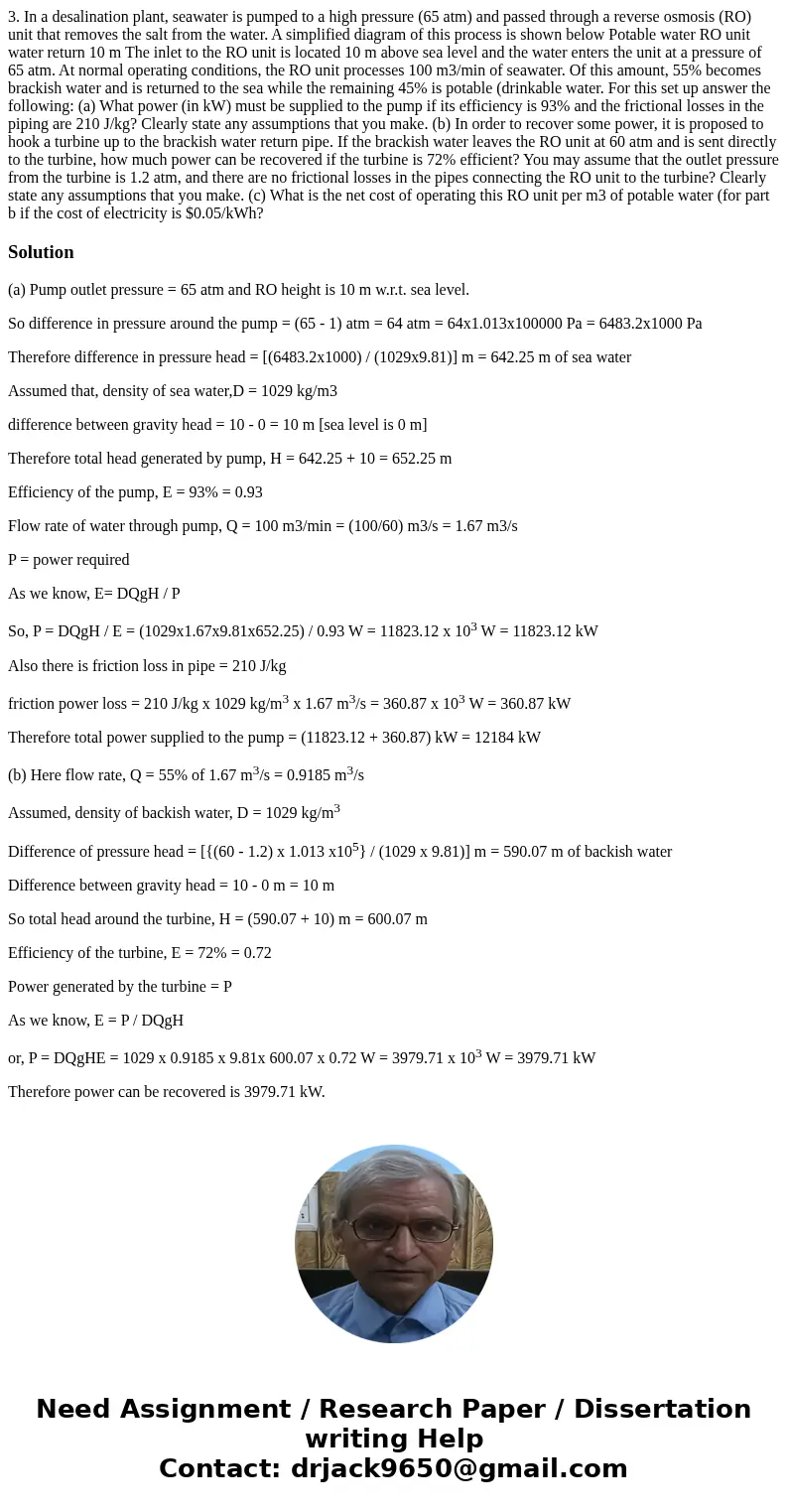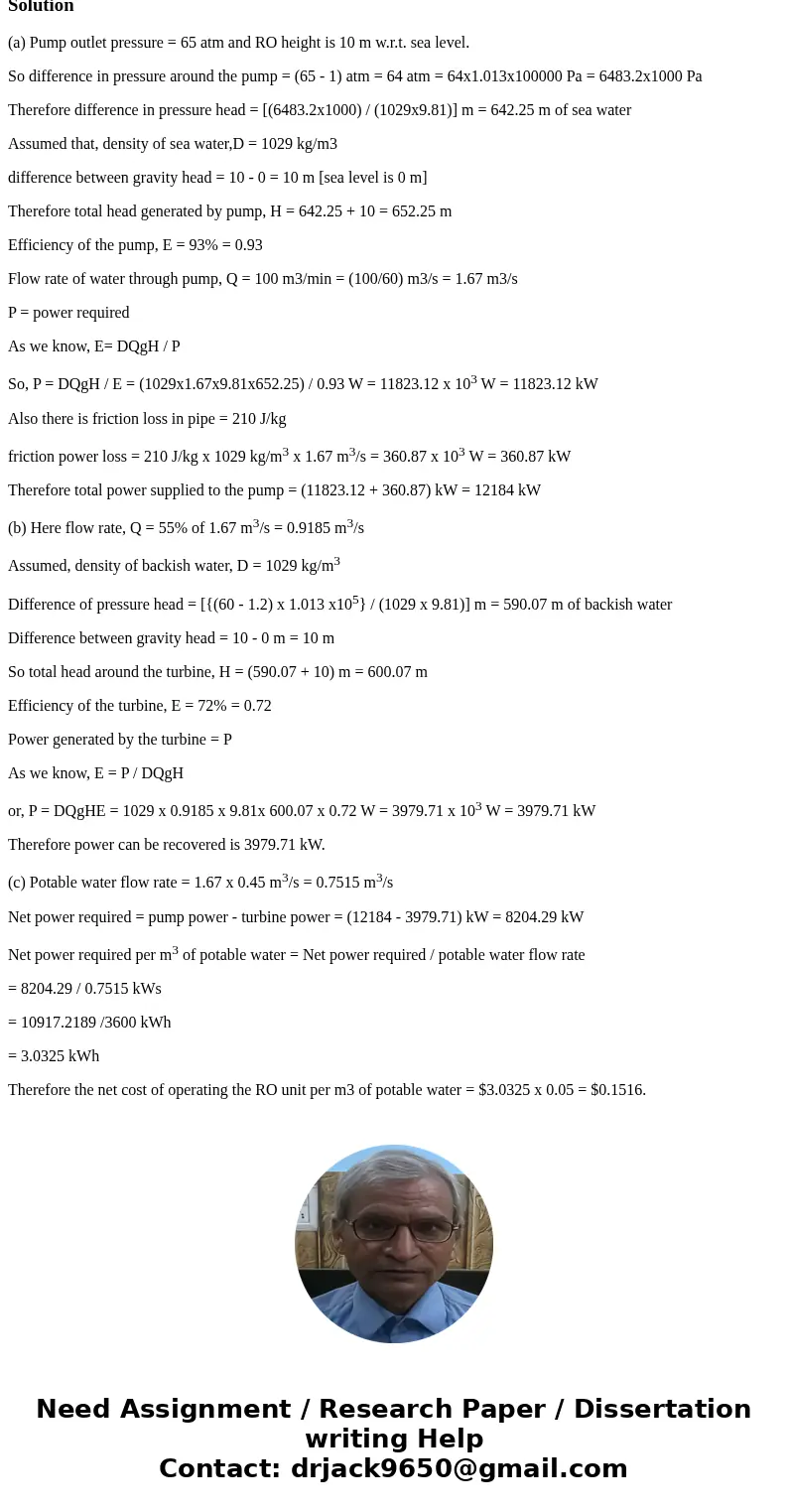3 In a desalination plant seawater is pumped to a high press
Solution
(a) Pump outlet pressure = 65 atm and RO height is 10 m w.r.t. sea level.
So difference in pressure around the pump = (65 - 1) atm = 64 atm = 64x1.013x100000 Pa = 6483.2x1000 Pa
Therefore difference in pressure head = [(6483.2x1000) / (1029x9.81)] m = 642.25 m of sea water
Assumed that, density of sea water,D = 1029 kg/m3
difference between gravity head = 10 - 0 = 10 m [sea level is 0 m]
Therefore total head generated by pump, H = 642.25 + 10 = 652.25 m
Efficiency of the pump, E = 93% = 0.93
Flow rate of water through pump, Q = 100 m3/min = (100/60) m3/s = 1.67 m3/s
P = power required
As we know, E= DQgH / P
So, P = DQgH / E = (1029x1.67x9.81x652.25) / 0.93 W = 11823.12 x 103 W = 11823.12 kW
Also there is friction loss in pipe = 210 J/kg
friction power loss = 210 J/kg x 1029 kg/m3 x 1.67 m3/s = 360.87 x 103 W = 360.87 kW
Therefore total power supplied to the pump = (11823.12 + 360.87) kW = 12184 kW
(b) Here flow rate, Q = 55% of 1.67 m3/s = 0.9185 m3/s
Assumed, density of backish water, D = 1029 kg/m3
Difference of pressure head = [{(60 - 1.2) x 1.013 x105} / (1029 x 9.81)] m = 590.07 m of backish water
Difference between gravity head = 10 - 0 m = 10 m
So total head around the turbine, H = (590.07 + 10) m = 600.07 m
Efficiency of the turbine, E = 72% = 0.72
Power generated by the turbine = P
As we know, E = P / DQgH
or, P = DQgHE = 1029 x 0.9185 x 9.81x 600.07 x 0.72 W = 3979.71 x 103 W = 3979.71 kW
Therefore power can be recovered is 3979.71 kW.
(c) Potable water flow rate = 1.67 x 0.45 m3/s = 0.7515 m3/s
Net power required = pump power - turbine power = (12184 - 3979.71) kW = 8204.29 kW
Net power required per m3 of potable water = Net power required / potable water flow rate
= 8204.29 / 0.7515 kWs
= 10917.2189 /3600 kWh
= 3.0325 kWh
Therefore the net cost of operating the RO unit per m3 of potable water = $3.0325 x 0.05 = $0.1516.


 Homework Sourse
Homework Sourse